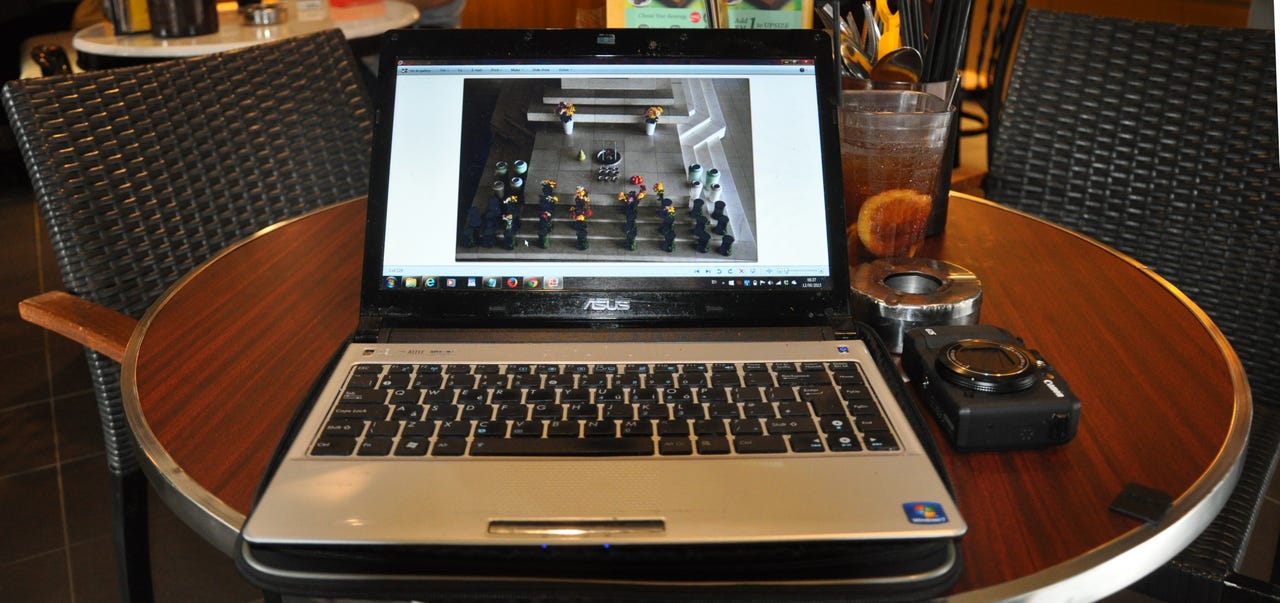Computing on 40p - or 50 cents - per day


My £350 13.3-inch Asus laptop -- seen here in Ipoh, Malaysia -- traveled tens of thousands of miles over six years and still works perfectly. However, I've just replaced it with a lighter, faster, cheaper (£339.99) orange 11.6-inch Core m3-6Y30 powered Lenovo Yoga 700 touch-screen convertible. (Prices include 20% tax,)
I was just wondering what to buy my desktop PC for Christmas, and top of the list is a Blu-ray writer. The business reason is to create off-site backups, but I already have a Blu-ray PVR under my TV set, so I also have some discs to play with.
I don't buy my PC presents every year, but I'm spending my desktop budget, which is currently £100 per year.
My budgeting habit goes back to the dawn of personal computing, when I got married and saved hard for a mortgage. Once I had the numbers in VisiCalc, I couldn't resist the temptation to divide by 365 to find the cost per day. Or to divide by 250, to find the cost per working day, assuming 5-day weeks and two weeks off.
The Lenovo Yoga 700 lightweight travel laptop isn't as well made as a MacBook with the same Core m3 processor, but it does all I need for what I paid: £233.33 plus VAT.
If I budget £100 a year for a desktop PC, plus £100 a year for a laptop, I can spend roughly £500 on a desktop PC and around £350 on a laptop. Obviously, they have to meet my business needs, but I'm just a journalist who does a bit of photo editing and the bare minimum accounting. Before computers, I survived by writing in longhand, on manual typewriters, and then on my pride and joy, an IBM Model D Executive electric with a carbon ribbon and proportional spacing.
These budgets obviously assume the desktop PC will have a 5-year lifespan, while the laptop will last 3.5 years. In fact, my purchases have done rather better than that. The £350 Acer laptop I bought in 2010 lasted until this summer, and still works perfectly. The £559 Core i5 Dell Vostro 460 MT desktop PC, which I bought in late 2011, is running beautifully with Windows 10, and should last several more years. However, it's already had an extra £100 spent on it, for an extra 8GB of RAM plus a replacement for the 1TB hard drive that failed.
A £100 per year budget comes to 27.4p (34 cents) per day, or 40p/50c per working day. This is less than the cost of one designer coffee per week. It's trivial in the context of an essential business machine, especially if the cost of labour is £10/$15 or more per hour. At £10 per hour, that 40p/day is equivalent to 144 seconds of work time.
Of course, my budget is not your budget: we all have different requirements. My budget is, in fact, reverse-engineered from what I need, plus a safety margin - I aim to buy more power than I need. Wasted time is a productivity cost, and a PC that saves two minutes per day pays for itself in a few years.
Companies that are still running slow PCs are just throwing money down the drain. Unfortunately, it's very easy to put off upgrades, because of the capital costs and the effort required, but you have to change some time. Putting off upgrades doesn't make problems go away, it just means you're inefficient for longer.
If office workers cost, say, £25,000 a year, then my £100 annual budget would only be 0.4% of their salary (not including other employment costs). In fact, it's probably reasonable to budget 1%, or £250 a year for their hardware (not including IT costs). I'd be interested to hear if anyone has taken this approach.
My £100 annual budget is not down to lack of funds. It's down to the dramatic decline in PC prices, and the recognition that there's no point in spending more than necessary.
My first IBM PC/XT cost around £6,000, including an Epson dot-matrix printer. Its 512K memory upgrade cost another £999. Happily, I didn't have to buy it out of my own pocket, though I did get Olivetti's version of the Tandy 100 for writing and email on the go. Plus a £299 acoustic coupler.
In the 1990s, I was spending from £2,500 to £1,500 on desktop PCs and around £1,000 to £2,000 on laptops. The laptop prices increased because my first £1,000 Toshiba T1000LE only ran MS-DOS. Later Windows laptops like the wonderful IBM ThinkPad 240X ultraportable (no CD, no floppy) were twice the price.
By 2005, I could get a decent Dell desktop for around £1,000. I was willing to spend that amount in 2011 as well. As it turned out, I could get something very much faster for a bit over £500 - upgrading from a Pentium 4 to a 3.3GHz Core i5-2500 - so that's what I did. And it has worked out well. Even at six years old, my Vostro's benchmarks match current systems with 2.3GHz i5-6200U and 2.5GHz Core i7-6500U chips, and I could probably beat those PCs by upgrading my Nvidia graphics card.
However, I'm not making any predictions about reductions in future spending. Shop around and you can already get Windows desktops and laptops for £/$200 or less. At the moment, there's little I'd be willing to buy at that price, because the screens and keyboards aren't good enough for sustained use. That could change, but I'm not betting on it.